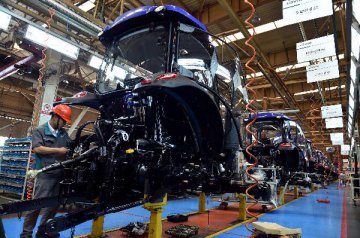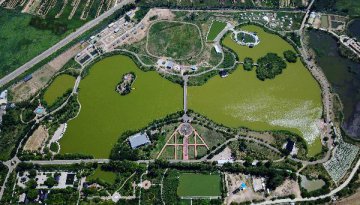
As the Central Economic Work Conference approaches, multiple institutions predict that focus will be laid on stabilizing investment and promoting consumption next year, and 2018 expects an annual economic growth of 6.7 percent.
According to a report recently released by the Institute of International Finance at the Bank of China, China’s economy is preliminarily expected to grow by around 6.7 percent in 2018, 0.1 percentage point lower than that of 2017, but more attention will be paid to the improvement of quality and effectiveness while stabilizing growth.
The National Academy of Development and Strategy, Renmin University of China (RUC) also predicts that China’s macro economy will remain stable in 2018 with GDP growth recording 6.7 percent, 0.1 percentage point lower than that of 2017.
In 2018, as external economic environment further improves and adjustment of domestic economic structure sees steady progress, GDP growth in each quarter will maintain stable amid fluctuation, and annual GDP growth will drop to 6.65 percent, according to the Center for Macroeconomic Research under Xiamen University.
Liu Yuanchun, vice president of RUC and executive director of National Academy of Development and Strategy, RUC, claims that at present, China’s economy must place a premium on the accelerating drop of actual growth in fixed asset investment. The core of stabilizing growth in 2018 is to “stabilize investment”.
Key economic work in 2018 are as follows. The first is that the supply-side structural reform must be further advanced, but the pursuit of quantitative objectives will be upgraded to the pursuit of quality improvement. The second is that efforts must be made to heighten financial supervision, downsize channel business, and accelerate financial deleveraging. Local and individual financial risks might be caused. The third is that mixed-ownership reform awaits further breakthrough as the state-owned enterprises reform enters a new era, Guan Qingyou, head of Rushi Advanced Institute of Finance and chief economist, said so while being interviewed by the Economic Information Daily.
Zhang Yu, head of fixed-income business under Minsheng Securities Research Institute, told the journalist that as the supply-side structural reform further advances, initial success has been achieved in consumption upgrading and the transition of industrial structure. Industrial concentration ratio improves and consumption makes greater contribution. The government now attaches more importance to the change of economic growth model and the improvement of economic growth, and it is now more tolerant towards falling economic growth.
Wang Hongju, a deputy director of the National Academy of Economic Strategy (NAES) of the Chinese Academy of Social Sciences, claims that both economic progress and stability should be ensured in 2018. Supply-side structural reform must be deepened, and business environment must be improved for enterprises in 2018.
Translated by Jennifer Lu























Latest comments